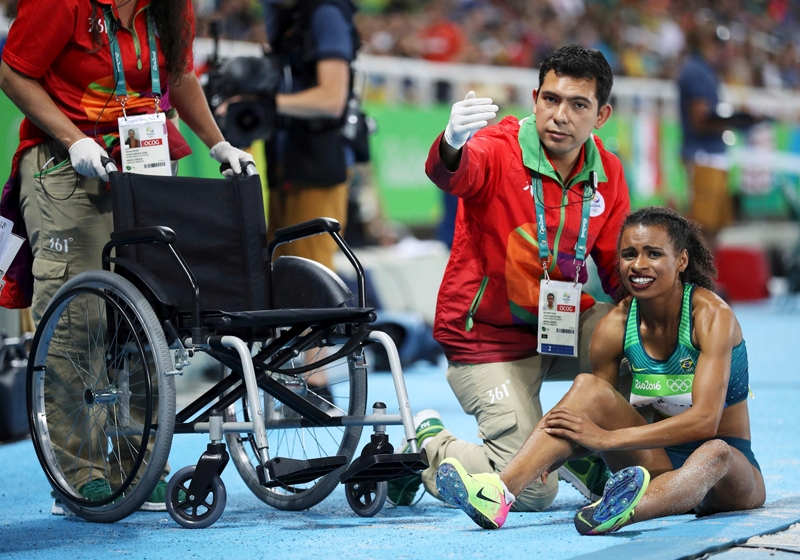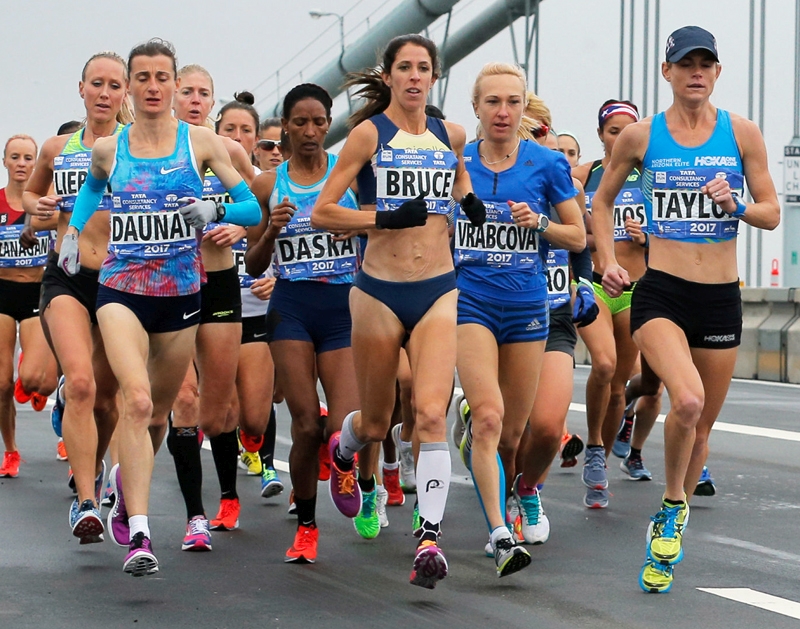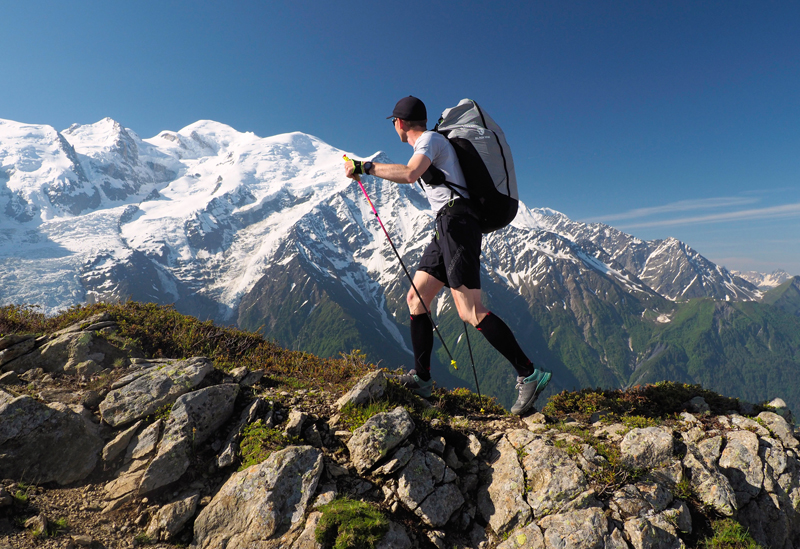You are viewing 1 of your 1 free articles. For unlimited access take a risk-free trial
Skin kindness: don’t get sore this summer

Trevor Langford provides simple guidelines on how to prevent and manage blisters and skin abrasions in order to prolong pain-free athletic activity
Most of us have experienced the sensation of skin rubbing when wearing a new pair of trainers or starting pre-season training on hard surfaces. This often leads to blisters and skin abrasions that are not only sore to touch, but can also be a prime site for infection. And in warm summer conditions where sweating is more likely, this risk is increased. A blister can be defined as a fluid-filled sac on the surface of the skin, which may be complicated by infectionMed. Sci. Sports Exerc, 2008, 40, 7, 1297–1306. Most commonly, blisters occur on the feet in running-based sports, but they are also common on the hands of rowers and amongst other hand-related sports. Common sites for blister formation in running-based sports are on the back of the heel, and under the joint of the big toe which is used to ‘push off’ in the running gait cycle – also known as the ‘toe-off’ phase (see figures 1 and 2).
Figures 1a-c: Blister examples



Figure 2: Phases in running

The types of blisters we are mostly interested in from a sporting perspective are the friction type blisters, which usually arise from wearing new or incorrectly-fitting footwear. A blister may arise from friction between the skin and an external surface, and therefore care should be taken to wear new shoes in and ensure they are correctly fitted. Figure 3 shows the step-by-step development of blister formation, which you may be able to relate to from prior experience.
Unfamiliar pressure from external sources or periods of rest followed by a resumption of activity can be prime causes for friction blisters. Blisters may also arise in patients with circulatory deficiencies, diabetes or from pressure soresMed. Sci. Sports Exerc, 2008, 40, 7, 1297–1306. Other common causes of blister formation may be the result of insect bites, burns or contact dermatitis.
Figure 3: Blister formation and development

Friction blisters, roof intact
This type of blister marks the early onset of blister formation due to increased rubbing against skin surfaces. The fact the skin surface hasn’t broken provides a perfect natural barrier to prevent against infection. It is often tempting to burst the blister, but it is actually more effective to cover the blister with a protective aid to reduce the friction contact and lower the risk of infection. Aim to allow the skin surface to break away on its own accord once the new skin surface underneath has developed and is able to withstand the forces applied during the demands of sport. Smaller blisters can be covered with plasters whereas larger blisters can be covered by a gauze dressing or other protective means.To allow sport to continue, a protective barrier should be applied and the addition of doughnut padding allows for forces to be applied without worsening the blister (see figure 4). Bear in mind that training with an unprotected blister will not only cause a breakdown in the skin surfaces resulting in pain, it may also cause alterations in the running gait cycle in order to alleviate pain. This may ultimately cause an overuse injury further up the body. When blisters occur, there may be a temptation to simply tough it out and continue training. However, it’s important to protect the skin and prevent a more serious injury from occurring. Therefore properly treating and managing blisters early on will enable you to continue to train as pain allows.
Figure 4: Doughnut dressings

Burst blisters
If a blister has burst, don't peel off the dead skin on top of the blister. It is advisable to allow the fluid inside to drain and then to wash it thoroughly with soap and water. Try not to soak the blister site in a bath as any breakdown in the newly formed skin has the potential to turn into an infection from dirt and debris in the bath. Likewise, when in public places, wearing flip flops in showers and on tiled floors is a simple solution for protection against bacteria that are transported from other people’s feet and shoes.Cover the blister and the area around it with a dry, sterile dressing to protect it from infection until it heals. Hydrocolloid dressings are available over the counter from pharmacies and have been shown to help prevent discomfort and encourage blister healing. A hydrocolloid material is a gel-like layer of film that is absorbent and self-adhesive particularly in moist conditionsWounds Int, 2011, Nov, 2, 4, 1-6. These types of products work very well in athletic activity, where the skin becomes sweaty and greasy. If the top layer of dead skin from a burst blister has already rubbed off, don't pick at the edges of the remaining skin as this will irritate new skin forming. If the blister is on your foot, try to avoid wearing the shoes that caused it - at least until it heals - and resume wearing them gradually.
Blood blisters appear with a small sac of dark red fluid beneath the surface of the skin. These blisters should be left to heal naturally (as in the case of a friction blister), rather than intentionally bursting them. These types of blisters are often painful and an ice pack can be applied to reduce the pain arising from them. As with friction blisters, aim to keep blood blisters covered. If it does burst, keep it clean and dry.
Blister prevention
A large number of products exist on the market to manage and prevent blister formation. It can seem quite overwhelming working out which products to use, especially as some can be quite costly if used regularly over a long period. Here are some simple measures to reduce friction between the skin and an external surface (see guidelines below).Strategies for blister prevention
- Wear appropriate footwear for your activity eg, for running, use running trainers matched to your own running style. Never use casual of fashion type trainers!
- During the off-season aim to continue physical activity in your usual footwear to prevent skin from softening.
- Break new footwear in slowly. Don’t do a 20-mile run in brand new shoes the first time you wear them.
- Replace footwear when breakdown in shoe materials occur. For example, at the heel of the trainer, which may have broken down due to sweat and pounding, creating a roughened
- Socks with anti-blister padding can be purchased. These offer a supportive structure for the inside arch of the foot and can be repeatedly used.
- A material known as ‘second skin’ can be used between the skin and a plaster that reduces friction pressure on key spots such as the heel and the big toe.
Skin abrasions
Skin abrasions are often sustained during falls and spills on hard surfaces. A skin abrasion is a superficial graze that doesn’t break the outer skin level known as the epidermis. A small amount of blood may be present. However, it is not as invasive as a laceration and will usually not leave a long lasting scar. It is essential though, to protect the area to allow effective healing to take place. This can be achieved by washing with sterile water and covering with a hydrocolloid or hydrogel protective barrier. You should also use the same approach as that for a burst blister — ie avoid soaking the wound in dirty bath and opt for a shower instead.It is often suggested that letting the ‘fresh air’ get to an abrasion can help to promote soft tissue healing. However, some research has provided evidence against this notionJ of Athlet Train, 2008, 43, 6, 600–607. Over a 14-day period researchers studied the effects of using the hydrogel film known as Curagel and two other protective layers compared to using no protective barrier on skin abrasions. After two weeks the Curagel barrier was more effective in improving abrasion colour and overall presentation compared to no barrier. It seems that keeping an abrasion covered allows for the wound to remain moist allowing for faster healing to occur. An additional benefit of a protective barrier is that athletic activity can continue with reduced risk of irritation to the affected area.
Figure 5: Skin abrasion after cycling spill

In summary
Blister formation is preventable through various means and doesn’t have to involve spending large amounts of money on branded goods, although some of them are very effective. If a blister or skin abrasion does occur then the utmost importance should be placed on keeping it clean, covered and free of infection, which allows effective healing to take place. Athletic activity can be continued as long as there is no compromise on movement function.Other articles you may be interested in:
Related Files
Newsletter Sign Up
Testimonials
Dr. Alexandra Fandetti-Robin, Back & Body Chiropractic
Elspeth Cowell MSCh DpodM SRCh HCPC reg
William Hunter, Nuffield Health
Newsletter Sign Up
Coaches Testimonials
Dr. Alexandra Fandetti-Robin, Back & Body Chiropractic
Elspeth Cowell MSCh DpodM SRCh HCPC reg
William Hunter, Nuffield Health
Keep up with latest sports science research and apply it to maximize performance
Today you have the chance to join a group of athletes, and sports coaches/trainers who all have something special in common...
They use the latest research to improve performance for themselves and their clients - both athletes and sports teams - with help from global specialists in the fields of sports science, sports medicine and sports psychology.
They do this by reading Sports Performance Bulletin, an easy-to-digest but serious-minded journal dedicated to high performance sports. SPB offers a wealth of information and insight into the latest research, in an easily-accessible and understood format, along with a wealth of practical recommendations.
*includes 3 coaching manuals
Get Inspired
All the latest techniques and approaches
Sports Performance Bulletin helps dedicated endurance athletes improve their performance. Sense-checking the latest sports science research, and sourcing evidence and case studies to support findings, Sports Performance Bulletin turns proven insights into easily digestible practical advice. Supporting athletes, coaches and professionals who wish to ensure their guidance and programmes are kept right up to date and based on credible science.











